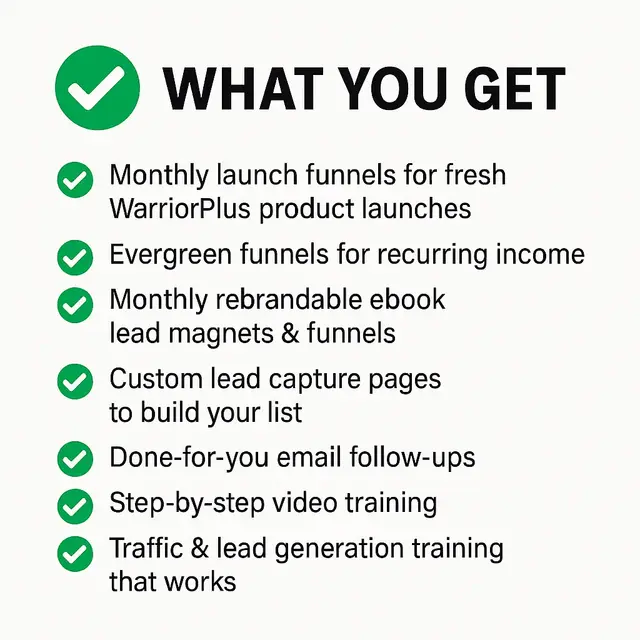Launching a digital product can feel like standing at the edge of a cliff, ready to leap into the unknown. But it doesn’t have to be. According to Statista, the digital product market is set to reach a jaw-dropping $1.1 trillion by 2026. That’s right—there’s never been a better time to dive in! But let’s be honest, launching isn't easy. It's a process, and to nail it, you need a solid plan.
You’ve got the idea, the product is polished, and you’re ready to go. But where do you start? With the right checklist, that’s where. Below, we’ve laid out the ultimate digital product launch checklist to help you stay organized and maximize your chances of success. Whether you’re launching an app, an ebook, or an online course, these steps are your roadmap to a successful launch.
1. Research and Validate Your Idea
Before anything, make sure people actually want what you’re offering. It sounds obvious, but many skip this step—don’t. Use tools like Google Trends, online forums, or even conduct surveys to confirm demand. No demand? Time to pivot before you sink your resources into something that won’t fly.
Action Step: Create a simple landing page and drive traffic using Facebook or Google Ads. If you can generate interest (signups, comments, etc.), you’re on the right path.
2. Craft a Value Proposition
What makes your product different? Why should anyone care? Your value proposition should be clear, concise, and compelling. A strong value prop answers the question: “What problem does this product solve?” and “Why should I choose this over anything else?”
Action Step: Write a 30-second elevator pitch for your product. If you can’t summarize its value quickly, keep refining.
3. Build Buzz Before the Launch
You wouldn’t throw a party without inviting anyone, right? Same goes for your product launch. Start promoting early. Email lists, social media, influencer partnerships—these are all channels to tap into before your product goes live.
Action Step: Create a pre-launch email list. Offer a free resource or exclusive content to encourage sign-ups. The bigger the list, the better your launch day will be.
4. Create a High-Converting Landing Page
First impressions matter. Your landing page is where the magic happens—it needs to capture attention, provide value, and make the next step crystal clear (whether that's a purchase, sign-up, or download). Optimize it with eye-catching design, powerful copy, and strong calls-to-action (CTAs).
Action Step: Use A/B testing to experiment with different headlines, CTAs, and page layouts. Tools like Unbounce or Leadpages make it easy.
5. Plan Your Pricing Strategy
Price too high? You might scare people off. Too low? You risk devaluing your product. Research the competition, understand your market, and test different pricing models. Bundles, discounts, and tiered pricing can help make your product more appealing.
Action Step: Run a limited-time discount during your launch to create urgency.
6. Prepare Your Sales Funnel
Your sales funnel should be airtight, guiding your audience from curious onlookers to loyal customers. Think about each stage of the customer journey: awareness, consideration, and conversion. What content or messaging will move them through each phase?
Action Step: Map out your entire funnel from top to bottom. Identify any leaks (places where people drop off) and refine those areas.
7. Leverage Social Proof
Social proof can be a game changer. Testimonials, case studies, and reviews all build trust with your audience. If you don’t have customers yet, consider beta testers or influencers who can vouch for the product’s value.
Action Step: Get at least three strong testimonials before your official launch. Social proof can boost conversions by up to 34%.
8. Launch Day Marketing Blitz
Launch day is your big moment—make it count. Announce your product through every channel you have: email list, social media, paid ads, influencers, and partnerships. The goal is to make as much noise as possible in a short period of time.
Action Step: Schedule your launch day emails and social posts in advance. Use tools like Buffer or Hootsuite to manage the chaos.
9. Post-Launch Feedback Loop
The work doesn’t stop once your product is out there. Gather feedback from early users, address bugs or issues, and continually improve your offering. The launch is only the beginning.
Action Step: Send a post-purchase survey to gather feedback and testimonials. Use this information to refine your product and inform future marketing strategies.
10. Monitor Metrics and Optimize
Keep an eye on your KPIs—sales, website traffic, conversion rates, customer acquisition costs. These numbers tell the story of your launch. If something isn’t working, tweak and optimize.
Action Step: Set up Google Analytics or a similar tool to track your key metrics in real time. Identify patterns and adjust your strategy based on data.
Don't forget to submit your product launch here on launchzilla.net
Don't forget to submit your product launch here on launchzilla.net








